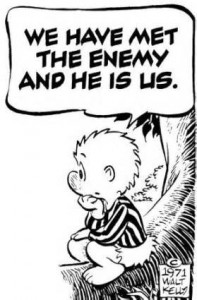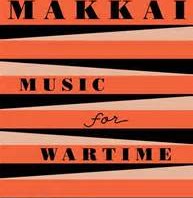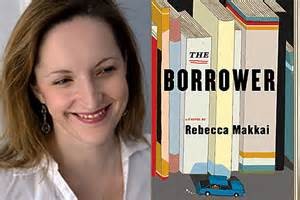 Because I’ve written previously about American gun violence in an editor’s note on this site (Volume 62, No, 2: “Gun Culture and Gun Cult”), this blog seems an appropriate place to register a kind of addendum, a question I have about Donald Trump’s reaction to the on-air murder of two Roanoke journalists who lived and worked about an hour from my home. It’s a question I won’t ever be in a position to ask the candidate, and I have no expectation that any working journalist or producer will be willing or allowed to ask, so here goes.
Because I’ve written previously about American gun violence in an editor’s note on this site (Volume 62, No, 2: “Gun Culture and Gun Cult”), this blog seems an appropriate place to register a kind of addendum, a question I have about Donald Trump’s reaction to the on-air murder of two Roanoke journalists who lived and worked about an hour from my home. It’s a question I won’t ever be in a position to ask the candidate, and I have no expectation that any working journalist or producer will be willing or allowed to ask, so here goes.
I was astonished to hear Trump’s comment that, if the WDBJ employees Alison Parker and Adam Ward had been armed, the two journalists might have been able to protect themselves from this horrible ambush. My question is simply, “How?” I recognize that details are not Trump’s forte, but I’m trying to imagine the scenario for him. Suppose the journalists were both comfortable with handguns, trained marksmen, veterans of combat simulation courses who practiced on a regular basis. This is, after all, the most intelligent way to be “armed,” though not the practice of journalists, except in rare cases, even in war zones. But just suppose they were.
We’ve seen the footage. Alison Parker is holding a microphone, focused on her interview subject (and let’s even arm the interviewee, as well, though still oblivious to the assassin lurking behind her). Adam Ward is operating a video camera that requires both hands, concentrating on his craft, focusing, zooming, improving the angle, moving about. The interview is in a resort town, the subject uncontroversial, the circumstances unthreatening. Anyone but a trained and on-duty personal security guard would have been attending to the task at hand: get the story.
Then a Glock-wielding man emerges from the surrounding background blur of people, vehicles, buildings, ornamental vegetation. Without warning, he opens fire. Rapid fire. He’s motivated, fixated, and he evidently knows how to shoot. What I want to hear from the advocates of the “good man with a gun solution” is how the victims should have known to or could have been able to take preventive measures, evasive action, to return fire between the first shot and their last breaths. How many seconds are we talking about here? How does the self-defense scenario unfold? Think of the armed policeman in Houston, the New York officers sitting in their car. . . all armed and trained, all now dead.
What Trump has done is to invent an alternative scenario that’s so unlikely – given timing, disposition of shooter vis-à-vis the positions of the victims, sheer common sense – that is less realistic than the gun fights of Roger Moore Bond films. And why would he do that, instead of perhaps recommending that interviews be done in secret or by and with only those in body armor and helmets?
I believe Trump has two agenda items here. First, he must be careful never say anything to make his 2nd amendment zealot supporters question his allegiance to them and (yes) their economic power, despite his claim that he needs no money from anyone, ever. Secondly, he tends to blame victims. People to whom unfortunate things happen are another caste, those who lack his charm, his likeability, his boldness and enterprise, his infallible managerial expertise. What he’s saying is that he (and people like him, if there are any) are just too shrewd, wise, alert, intelligent, beloved to get shot.
A follow-up question, if it’s allowed: does Donald Trump carry a pistol? Or does he just have armed security guards around him? If he doesn’t, does he have any notion how much is involved psychologically in the decision to carry a weapon and how much effort is required to be proficient enough with one to make a positive difference, in situations where the lethal scenario unfolds slowly and tactical knowledge becomes valuable? America’s most successful military sniper was gunned down. Would he have been able to protect himself if he’d had a weapon . . . in his hand? When James Butler Hickok was shot, he carried two Colts, but Jack McCall came at him from behind, like Vester Flanagan. The famed gunfighter never had a chance.
I wonder if Trump has ever seen anyone shot to death or even been in the presence of a non-range, non-hunting discharge of a weapon, had the experience of hearing that first round crack and the shock that follows for anyone in the vicinity. To know what to do and have the reflexes and instinct to do it – that requires both training and a certain kind of temperament. Ask any policeman about that. Or ask a soldier.
When I was in college I witnessed a murder by handgun. Morning, outdoors, brisk beautiful day. Coming up a campus roadway, my friend and I saw two men silhouetted on a rise, maybe 75-100 feet away (some details are now faded, others indelible). One raised a gun and pointed it at the other’s head and fired. I have no idea exactly what my friend and I did physically at that instant; it’s gone from my mind. But if the shooter had chosen to go for us next, we’d have been easy prey. He shot himself instead, but I keep wondering if there’s any sign in the miles of Trump footage we’ve been exposed to that he would have reacted more effectively in the moments after that first shot on that windy campus morning or out at Smith Mountain lake this past week. Even if he’d had a sidearm and an excellent shooter’s eye and hand, even if he’d been spared the first round of the volley. No footage I’ve seen suggests he is qualified to judge what will or won’t save a victim from bullets.
If the journalists had been armed, they might have been able to save themselves. . . . That is not the position of a man who has brought imagination, experience, calculation or empathy to the question. It’s not the position of a man who “tells the truth” or “says what he really thinks.” It’s just the reaction of a man who talks.






